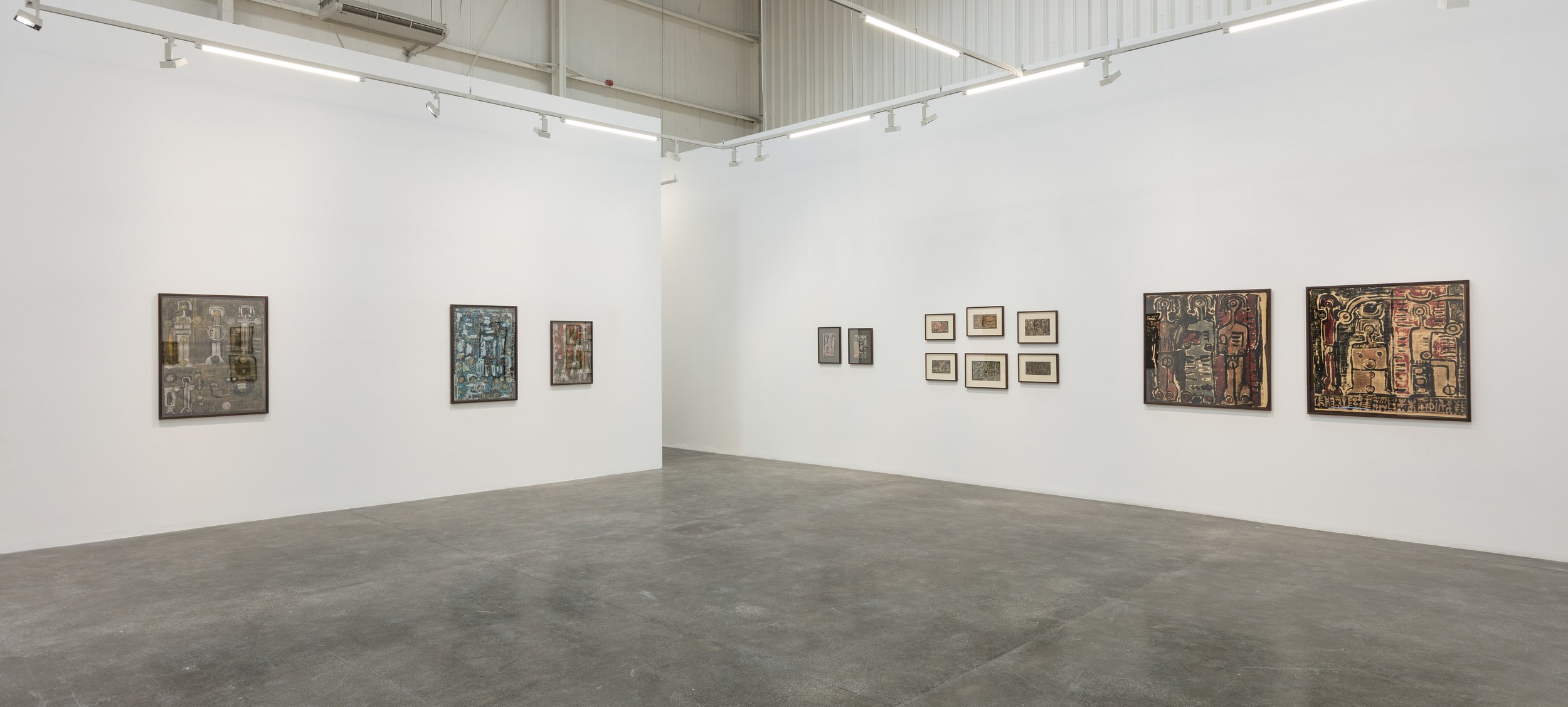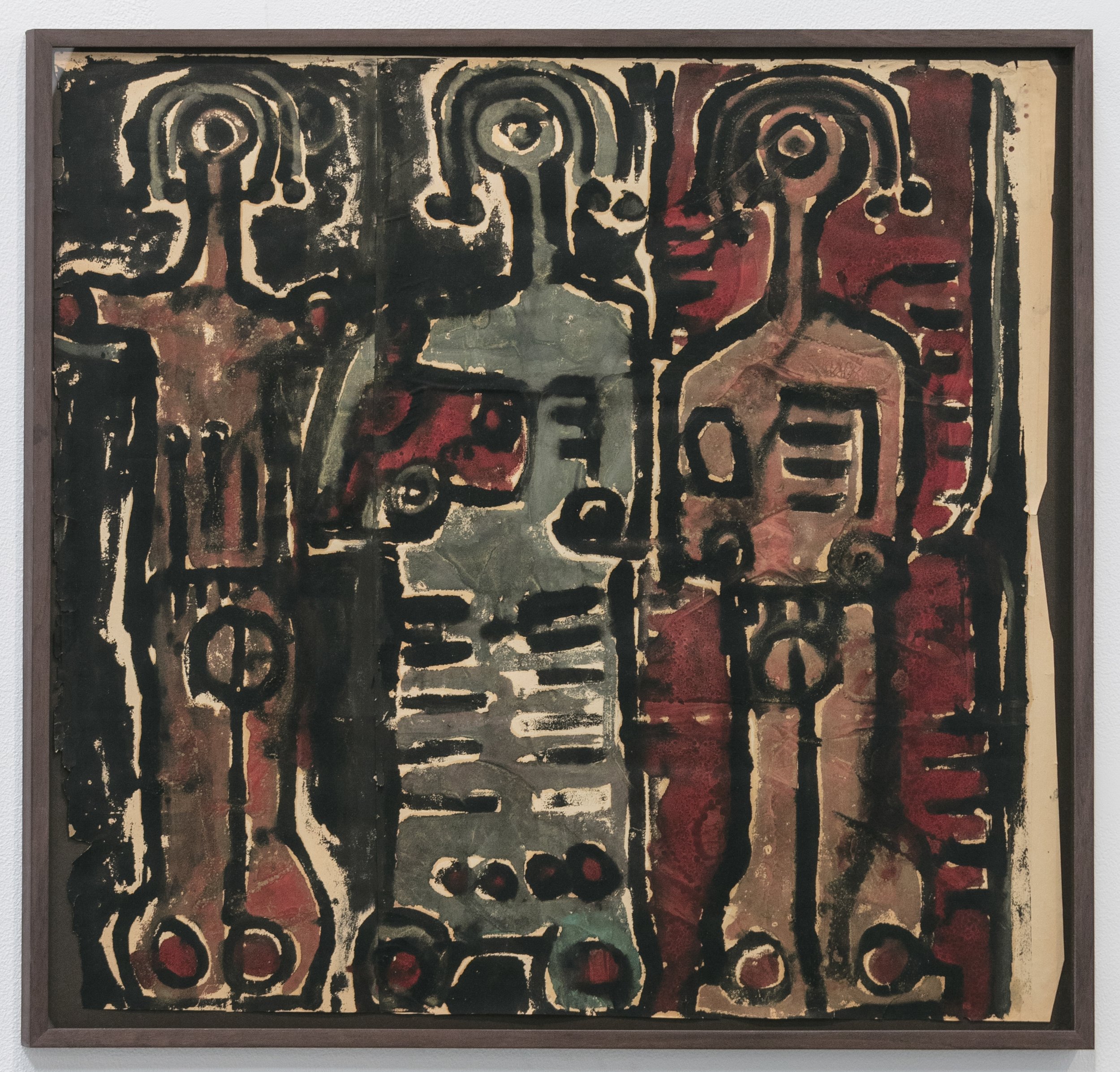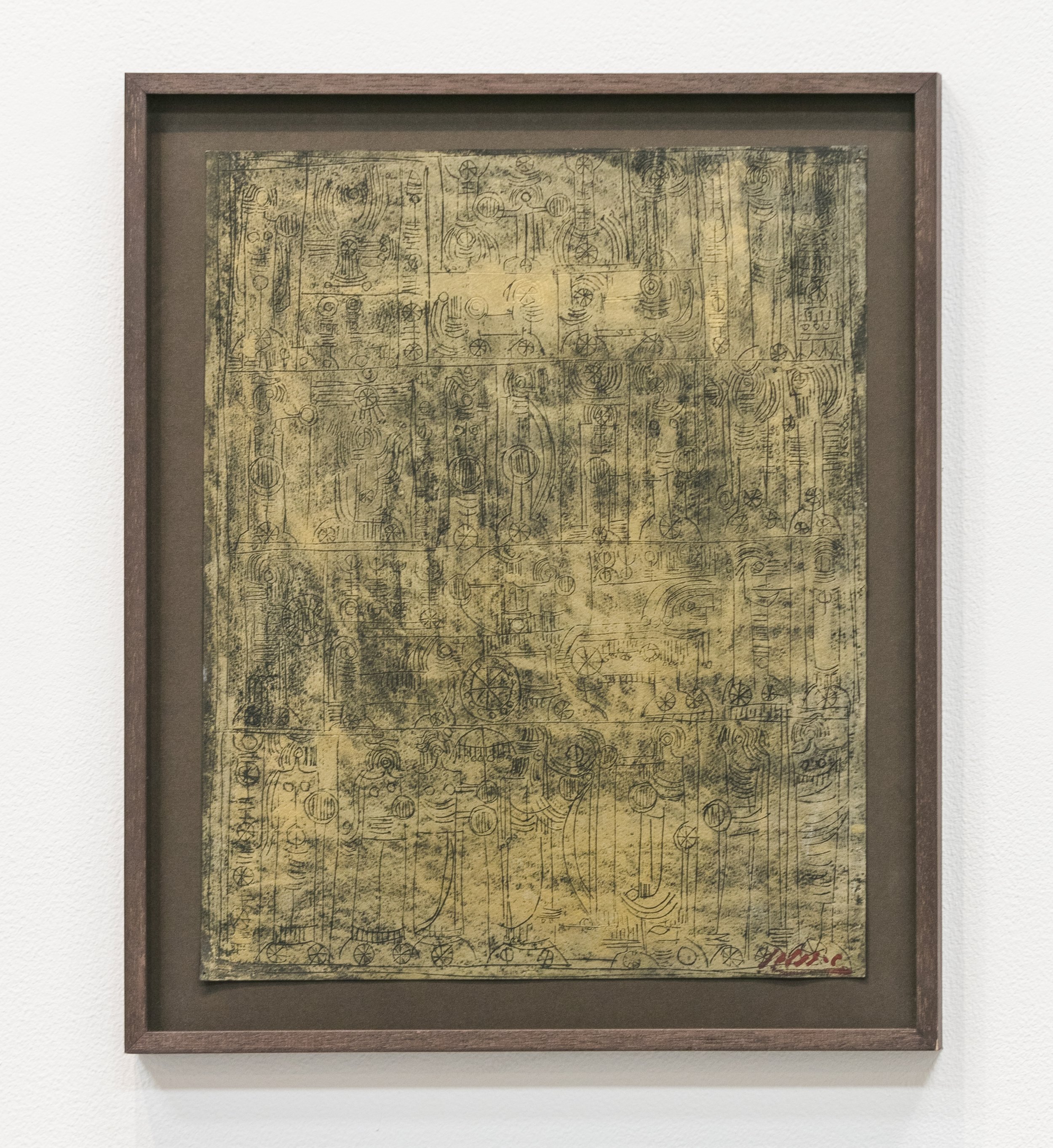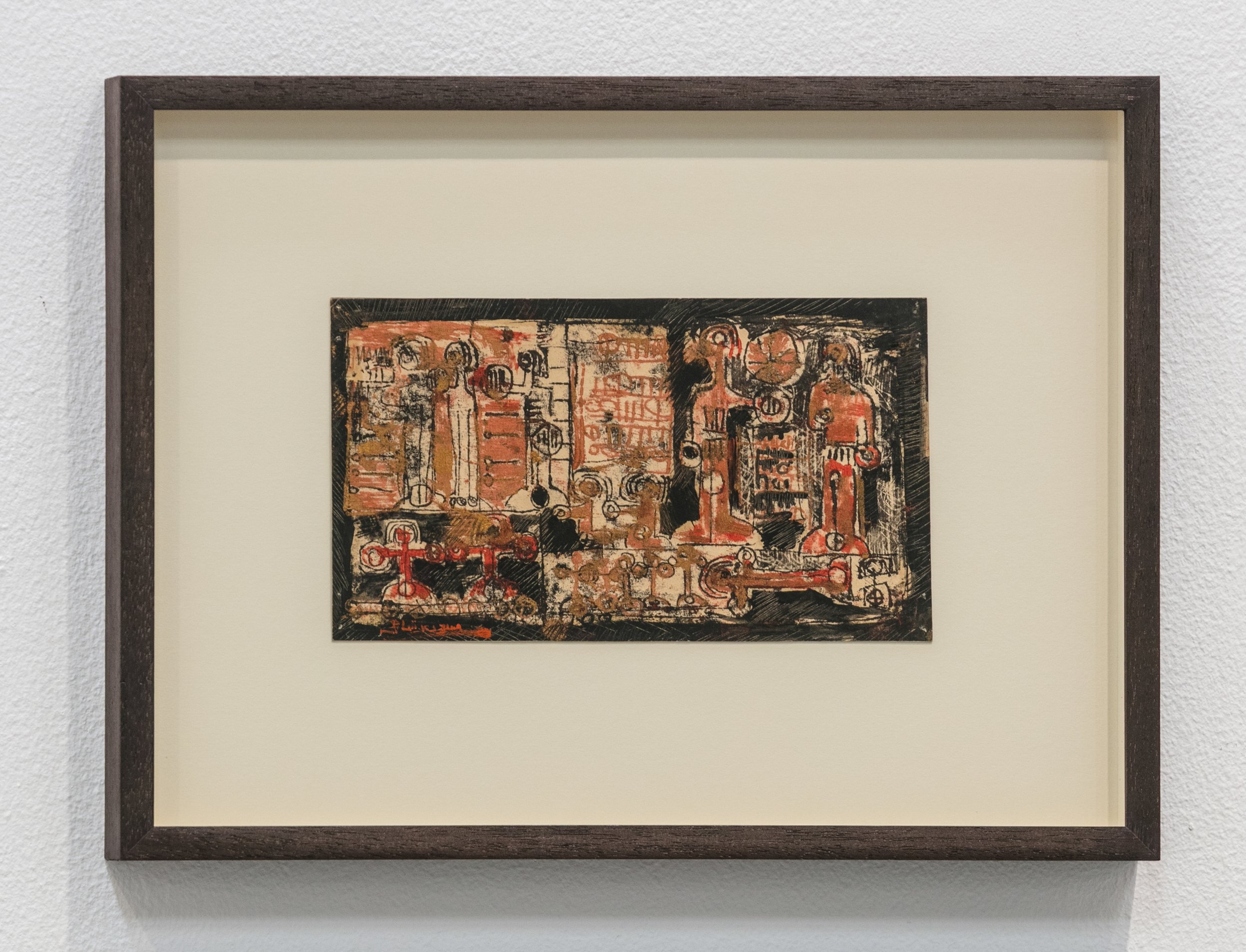New York Metropolitan Museum - Spiritual Pop Exhibition 2021




















installation at The Met Spiritual Pop: Art in 1960s Iran celebrates a gift of seven rare paintings by the artists Faramarz Pilaram (1937–1982) and Massoud Arabshahi (1935–2019) from the heirs of Eric and Sheila Azari in honor of The Met’s recent 150th anniversary This focused collection display is on view through December 5, 2021.
Max Hollein - Director of The Met:
“We are grateful to the heirs of collectors Eric and Sheila Azari for this important gift of art from a pivotal moment in Iranian art and history. Acquisitions such as this help further our mission to share narratives from across the globe and to celebrate an expanded and enriched vision of modern and contemporary art.”
Sheena Wagstaff - Chairman of the Department of Modern and Contemporary Art at The Met:
“presentation of path-breaking works by both Pilaram and Arabshahi is a thrilling occasion for The Met, particularly when such gifts reflect the significance of art as a witness to transformative moments in history “It celebrates the cosmopolitan spirit of Tehran in the 1960s, and these artists’ innovative embrace of fine art and popular culture to create a unique melding of tradition and modernity: a leitmotif of The Met’s international modern collection.”
LAWRIE SHABIBI GALLERY DUBAI - MASSOUD ARABSHAHI, EARLY WORKS 2017




























































MASSOUD ARABSHAHI EXHIBITION CATALOG 2017



























Los Angeles County Museum of Art Persian Gala, February 23, 1974


















CHARLES HOSSEIN ZENDEROUDI - MARTYR ESSAY & ANALYSIS
CHARLES HOSSEIN ZENDEROUDI - MARTYR
CHARLES HOSSEIN ZENDEROUDI - MARTYR ESSAY & ANALYSIS
In this groundbreaking analysis of the Zenderoudi masterwork Martyr Ali Gholipour provides new insight and scholarship into the artists visual lexicon and vocabulary. with iconographic references spanning thousands of years of Persian history, arguably there is no other artist who encodes this level of cultural density into their work.
Ali Gholipour is a journalist, critic, and researcher. He started his journalistic activities in 2003 with film and theater reviews. He holds a BA and MA in Theatre Studies and a PhD in Art Research from Tarbiat Modares University, Tehran, where he defended his doctoral thesis on cultural policymaking in the Pahlavi era in 2014. He is a visiting scholar at Tehran University of Art and Tarbiat Modares University, lecturing on playwrighting and play criticism. He published Cultivation of Public Taste in the Pahlavi Era (2019, Nazar Publication) and is an editor of The Street is a Stage, a collection of essays by Richard Schechner, et. al. (2018, Mania Honar Publication).
ENGLISH




















FARSI / فارسی
















CHARLES HOSSEIN ZENDEROUDI - MARTYR ESSAY & ANALYSIS
Reference - The Karbala Paradigm - MICHAEL FISCHER








CHARLES HOSSEIN ZENDEROUDI - ARTISTS MAP OF TEHRAN - LECTURE
PRESENTED BY Clare Davies: Assistant Curator of Modern and Contemporary Art, Middle East, North Africa, and Turkey at the Metropolitan Museum of Art
“In the mid-twentieth century, the contours of artistic practice in Tehran were shifting dramatically as the city expanded to the north and new cultural institutions were built in the urban center. An ink drawing on butcher paper executed by Hossein Zenderoudi (b. 1937, Iran) in this period doubles as a rudimentary map of Tehran’s evolving artistic hub: an area that housed the College of Fine Arts (est. 1940), the College of Decorative Arts (est. 1960-61), and recently opened galleries of modern art. Nearby, but beyond the borders of Zenderoudi’s handmade map, lay southern Tehran and its famous bazaar: an area increasingly identified at the time with a religious and socially conservative merchant class, the production of traditional arts and crafts, and political opposition to the shah.”
"This talk explores how the evolving topography of Tehran and its navigation by artists shaped avant-garde practices of the late 50s and early 60s. I argue, specifically, that a new generation of artists identified themselves with political networks and public religious rites based in the historic city, even as official and artist-run spaces for the arts multiplied elsewhere.”
HASSAN GAHEMI AKA HASAN KAFASH
HASSAN GAHEMI AKA HASAN KAFASH - REFERENCE & Anylisis
Ali Gholipour is a journalist, critic, and researcher. He started his journalistic activities in 2003 with film and theater reviews. He holds a BA and MA in Theatre Studies and a PhD in Art Research from Tarbiat Modares University, Tehran, where he defended his doctoral thesis on cultural policymaking in the Pahlavi era in 2014. He is a visiting scholar at Tehran University of Art and Tarbiat Modares University, lecturing on playwrighting and play criticism. He published Cultivation of Public Taste in the Pahlavi Era (2019, Nazar Publication) and is an editor of The Street is a Stage, a collection of essays by Richard Schechner, et. al. (2018, Mania Honar Publication).
ALI GHOLIPOUR - "Hamed jan, I finished my work on Hassan Ghaemi. In general, having done this work, I am of the opinion that this guy deserves an entire book. He has been quite unjustly marginalized. He is a more profound, more honest, and more accomplished artist than many others in his generation. In the attached file, I did my best to explain everything as briefly as possible. I had to skip a few points for the sake of space.”
Hassan GaHemi (b. 1933 – 2016) was born into a religious Muslim family in Rasht, Iran. While his early childhood was well provided for, his clergyman father’s passing left both Ghaemi and his mother on the precipice of poverty. He had no other choice but to take on various jobs from an early age to support himself and his widowed mother. It was not an easy life and a far cry from a clear path to an artistic career.
In 1944 at the age of ten, Ghaemi and his mother moved to Tehran. They rented and lived in a single room in a predominately Jewish neighbourhood. Against this cultural backdrop, he became acquainted with other religions – which he ultimately drew on for inspiration, much later in his artistic career, making his canvases all the richer in meaning.
With an early interest in painting which began at the age of nine when he borrowed an embroidery album from a classmate and copied the designs into his own book, he never looked back and was from then forever committed to his art. His passion continually demeaned and rejected by his disapproving family, he never received a formal art education and yet he continued to paint. To his dying day he claimed that joy for him, was in painting, and that at every juncture in life he had chosen painting over all other considerations.
In 1948, his passions led him to work in an advertising company where he met the Russian graphic artist Alexei Gorgiz. Ghaemi considered this to be the single most important chance encounter of his life. He was taught a variety of painting techniques and gradually began to earn money from his paintings – eventually allowing him to make a modest living through his creative production.
What he lacked in formal training, he made up for in raw talent, determination and an unrelenting vision. He sought out mentors and perhaps most importantly, found one in Jalil Ziapour. An Iranian painter, academician, researcher, and writer, he is considered the "father of modern Iranian painting". After participating in one of Ziapour’s classes in 1951, he was introduced to new painterly techniques and was able to learn about broader art history. In these classes, he met fellow artists such as Parviz Tanavoli – he also met Sohrab Sepehri during this period. The commonalities between Ghaemi and Sepehri led to the formation of a deep friendship, later realised as a joint exhibition in Los Angeles (1966), which was to be his last. This exhibition was sponsored by the International Student Centre of California University in cooperation with Ishtar Gallery of Art and Archaeology – Sheila Azari never wavered in her support of the artists she met during her time in Tehran.
It was however, initially with Ziapour’s support that Ghaemi first exhibited his works in 1958 at the opening ceremony of the UN Library in Tehran hosted by Gita Society. It was a formative and successful year for him – he later participated in the first Tehran Biennale and was awarded one of the Biennial’s prizes, which included a study opportunity in the United Kingdom. In 1959 he held his second solo exhibition at Esthetique Gallery and went on to participate in the second Tehran Biennial in 1960.
Ghaemi lived and worked in the United States from 1960 until he returned to Iran in 1978. Early on in his career, he was able to manoeuvre the art community successfully, but for reasons unclear, he disappeared only to re-emerge briefly towards the very end of his life, where he created a few additional larger paintings. We can only speculate: was it the Islamic revolution, the Iran-Iraq war or the return to a family that never fully accepted his professional artistic career? Perhaps the best hint is to be found in a final interview shortly before his death, wherein he says, “…at the very beginning I had to decide between money and painting, and I chose painting”. While he never stopped working on his art, he seems to have stopped producing with the active intention to sell, perhaps not wanting to be distracted by anything but ‘art for art’s sake’.
He was also a poet, with thousands of pages of poetry left behind. His output was notable, and his career was recognised and honoured in spite of his absence over the course of four decades. In 2015 the Iranian Artist Forum (Khane-e Honarmandan-e Iran) in collaboration with Tandis magazine and The Tehran Beautification Organization hosted a commemoration for Hassan Ghaemi and exhibited his works to much acclaim in the Iranian Artist Forum gallery space – bringing him back into the fold and enabling him to yet again take his rightful place along the other giants of Iranian modern art.





















































































































